GET READY, GET SET FOR FRACTIONS AND DECIMALS! Do you know what proper and improper fractions are? Do you understand where a decimal point should be? Would you like these concepts explained to you so that you will understand? Rebecca Wingard-Nelson simply explains fraction and decimal skills, such as adding mixed numbers, rewriting fractions, estimating decimals, and more. Whether you are learning this information for the first timeon your own or with a tutoror you would like to review your math skills, this book is a great choice.
FREE WORKSHEETS AVAILABLE AT ENSLOW.COM
About The Author Author
Rebecca Wingard-Nelson develops and writes math assessment tests, exit exams, proficiency tests, textbooks, and workbooks. She has written many math series for Enslow Publishers, Inc.

Math is all around, and an important part of anyones life. You use math when you are playing games, cooking food, spending money, telling time, reading music, or doing any other activity that uses numbers.
Even finding a television channel uses math!  Fractions and Decimals Are Everywhere You use fractions every day. Every time you use the word half, you are talking about a fraction! Measurements often use fractions. For example, a pencil could be
Fractions and Decimals Are Everywhere You use fractions every day. Every time you use the word half, you are talking about a fraction! Measurements often use fractions. For example, a pencil could be  inches long; you might need 1/2 cup of sugar for cookies; and your dog might weigh
inches long; you might need 1/2 cup of sugar for cookies; and your dog might weigh  pounds. Decimals are an important part of our money system. Money amounts in dollars and cents are written as decimals. Sports statistics, such as batting averages and race times, are also given as decimal numbers.
pounds. Decimals are an important part of our money system. Money amounts in dollars and cents are written as decimals. Sports statistics, such as batting averages and race times, are also given as decimal numbers.
The metric system is a way to measure using decimals, instead of fractions. Using This Book This book can be used to learn or review fractions and decimals at your own speed. It can be used on your own or with a friend, tutor, or parent. Get ready to discover math... made easy!
fractionPart of one whole thing or group. Fractions are numbers that stand for part of a whole.
A fraction may show part of one whole thing. This chocolate cake was cut into 6 equal pieces. One piece of the cake is gone. You can use a fraction to show how much of the cake is gone. 
 1/6 of the cake is gone.
1/6 of the cake is gone.  This is one whole group of elephants.
This is one whole group of elephants.  This is one whole group of elephants.
This is one whole group of elephants.
Some of the elephants are pink. You can use a fraction to show how many in the group of elephants are pink.  3/8 of the elephants are pink.
3/8 of the elephants are pink.
All fractions are made of two numbers, a top number and a bottom number. The bottom number is the denominator. It tells how many equal parts are in the whole.
The top number is the numerator. It tells how many parts you are talking about. To help you remember which is which, think, D is for downstairs and denominator, so the denominator goes on the bottom.  When you read a fraction, read the top number first. Then read the bottom number using words like half, thirds, fourths, or fifths. 1/4 This fraction is read as one fourth. 2/3 of this pie is left.
When you read a fraction, read the top number first. Then read the bottom number using words like half, thirds, fourths, or fifths. 1/4 This fraction is read as one fourth. 2/3 of this pie is left.
The fraction 2/3 is read as two thirds. The bottom number, 3, tells you there are three equal pieces in the whole pie. The top number, 2, tells you that two of the parts are left. 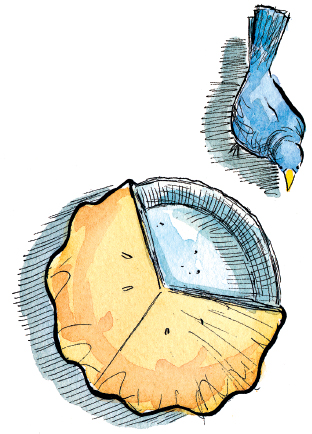 1/2 of these socks are dirty. The fraction 1/2 is read as one half. The bottom number, 2, tells you there are two socks in the whole group.
1/2 of these socks are dirty. The fraction 1/2 is read as one half. The bottom number, 2, tells you there are two socks in the whole group.
The top number, 1, tells you that one of the socks is dirty. 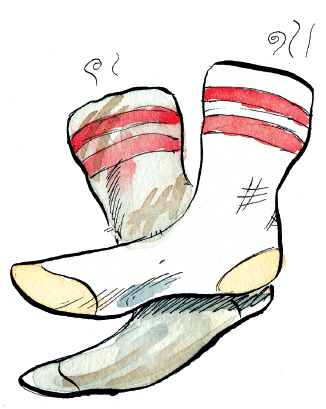
proper fractionA fraction whose top number is smaller than its bottom number. A fraction whose top number is smaller than its bottom number is called a proper fraction.

All proper fractions have a value less than one.
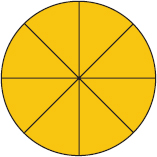
This circle has 8 equal parts. It is one whole circle.
If you are looking at less than 8 parts of the circle, you are looking at less than one whole circle.  8/8 is the same as 1, so it is not a proper fraction. Proper fractions can be shown on a number line between the numbers 0 and 1. Show 2/5 on a number line. 2/5 is less than 1. Draw a number line from 0 to 1.
8/8 is the same as 1, so it is not a proper fraction. Proper fractions can be shown on a number line between the numbers 0 and 1. Show 2/5 on a number line. 2/5 is less than 1. Draw a number line from 0 to 1.  The bottom number (denominator) is 5.
The bottom number (denominator) is 5.
That means there are 5 equal parts in one whole. Divide the number line from 0 to 1 into 5 equal spaces.  The top number (numerator) is 2. It tells you how many of the sections of the number line you are talking about. The numerator is 2, so count 2 spaces from the 0.
The top number (numerator) is 2. It tells you how many of the sections of the number line you are talking about. The numerator is 2, so count 2 spaces from the 0. 
improper fractionA fraction whose top number is equal to or larger than its bottom number.
An improper fraction has a top number that is equal to or larger than the bottom number.  Fractions whose top and bottom number are the same have a value of 1.
Fractions whose top and bottom number are the same have a value of 1.
A garden is divided into 3 parts. All 3 parts are planted with sunfl owers. How much of the garden is planted with sunfl owers?
3/3 is the same as
1 whole. The whole garden is planted with sunflowers.
When the top number is larger than the bottom number, the fraction has a value greater than 1. Here are three halves of a sweater. Three halves is written as the fraction 3/2 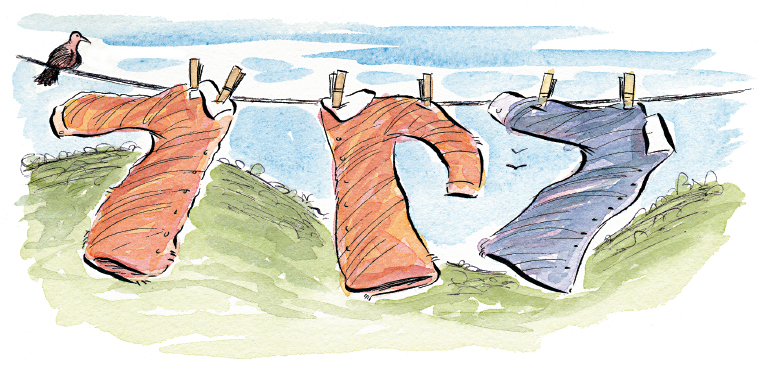



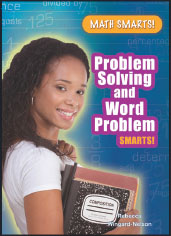
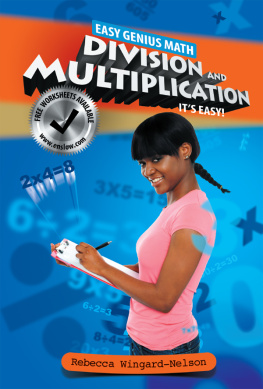



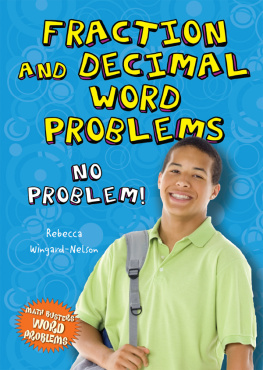
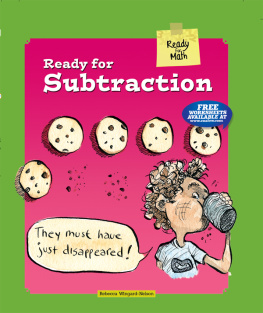
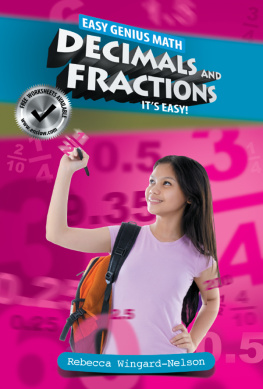
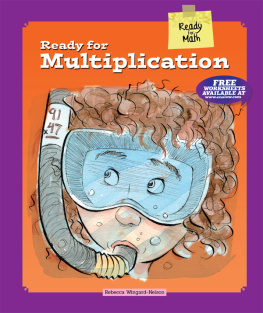

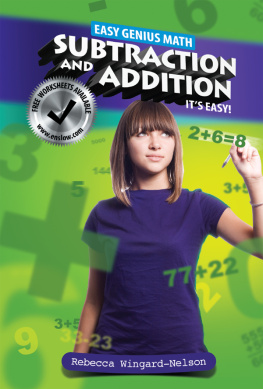
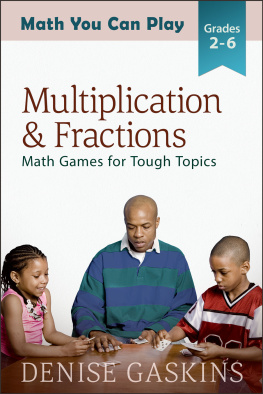
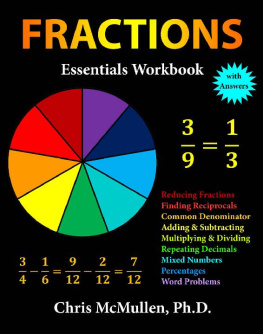
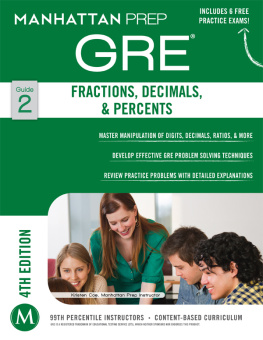
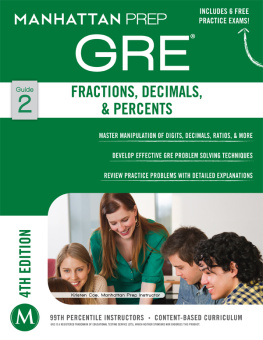
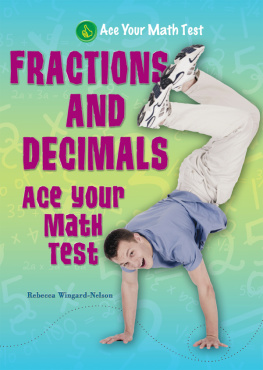
 Math is all around, and an important part of anyones life. You use math when you are playing games, cooking food, spending money, telling time, reading music, or doing any other activity that uses numbers.
Math is all around, and an important part of anyones life. You use math when you are playing games, cooking food, spending money, telling time, reading music, or doing any other activity that uses numbers.  Fractions and Decimals Are Everywhere You use fractions every day. Every time you use the word half, you are talking about a fraction! Measurements often use fractions. For example, a pencil could be
Fractions and Decimals Are Everywhere You use fractions every day. Every time you use the word half, you are talking about a fraction! Measurements often use fractions. For example, a pencil could be  inches long; you might need 1/2 cup of sugar for cookies; and your dog might weigh
inches long; you might need 1/2 cup of sugar for cookies; and your dog might weigh  pounds. Decimals are an important part of our money system. Money amounts in dollars and cents are written as decimals. Sports statistics, such as batting averages and race times, are also given as decimal numbers.
pounds. Decimals are an important part of our money system. Money amounts in dollars and cents are written as decimals. Sports statistics, such as batting averages and race times, are also given as decimal numbers.
 1/6 of the cake is gone.
1/6 of the cake is gone.  This is one whole group of elephants.
This is one whole group of elephants.  3/8 of the elephants are pink.
3/8 of the elephants are pink. When you read a fraction, read the top number first. Then read the bottom number using words like half, thirds, fourths, or fifths. 1/4 This fraction is read as one fourth. 2/3 of this pie is left.
When you read a fraction, read the top number first. Then read the bottom number using words like half, thirds, fourths, or fifths. 1/4 This fraction is read as one fourth. 2/3 of this pie is left. 1/2 of these socks are dirty. The fraction 1/2 is read as one half. The bottom number, 2, tells you there are two socks in the whole group.
1/2 of these socks are dirty. The fraction 1/2 is read as one half. The bottom number, 2, tells you there are two socks in the whole group.
 All proper fractions have a value less than one.
All proper fractions have a value less than one.  This circle has 8 equal parts. It is one whole circle.
This circle has 8 equal parts. It is one whole circle.  8/8 is the same as 1, so it is not a proper fraction. Proper fractions can be shown on a number line between the numbers 0 and 1. Show 2/5 on a number line. 2/5 is less than 1. Draw a number line from 0 to 1.
8/8 is the same as 1, so it is not a proper fraction. Proper fractions can be shown on a number line between the numbers 0 and 1. Show 2/5 on a number line. 2/5 is less than 1. Draw a number line from 0 to 1.  The bottom number (denominator) is 5.
The bottom number (denominator) is 5. The top number (numerator) is 2. It tells you how many of the sections of the number line you are talking about. The numerator is 2, so count 2 spaces from the 0.
The top number (numerator) is 2. It tells you how many of the sections of the number line you are talking about. The numerator is 2, so count 2 spaces from the 0. 
 Fractions whose top and bottom number are the same have a value of 1.
Fractions whose top and bottom number are the same have a value of 1.